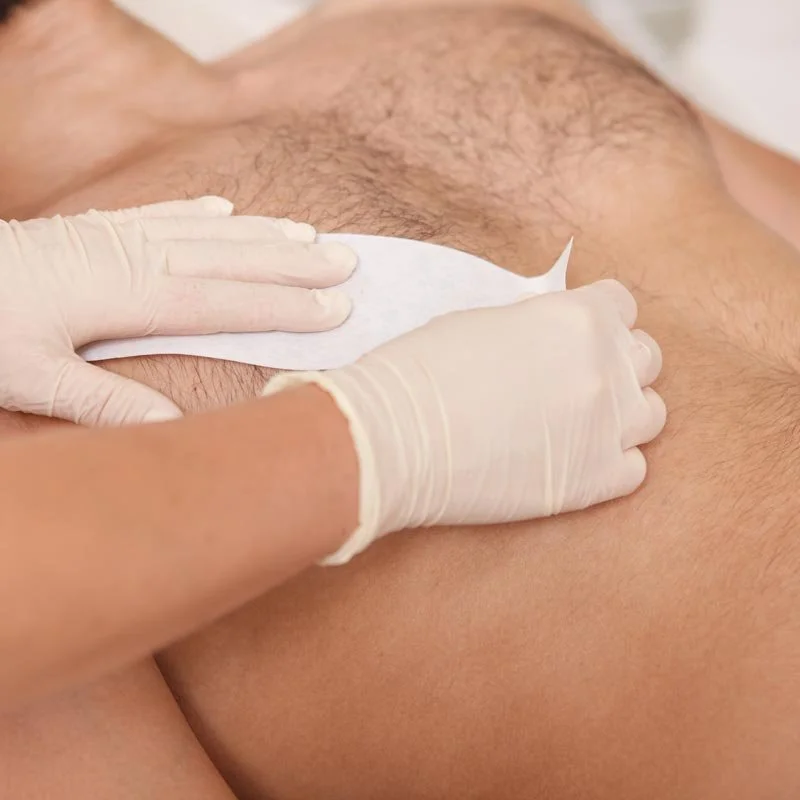
Waxing
Waxing is a popular method of hair removal that involves the use of hot or cold wax to remove hair from the root. Waxing can be performed on various parts of the body, including the eyebrows, upper lip, chin, underarms, arms, legs, chest, and back. It is a semi-permanent method of hair removal, meaning that the hair will not grow back for several weeks or longer, depending on the individual's hair growth cycle.
There are two main types of waxing: hot waxing and cold waxing. Hot waxing involves the use of a wax that is heated to a liquid or semi-liquid state and applied to the skin. The wax hardens as it cools, and it is then removed by pulling it off quickly in the opposite direction of hair growth. Hot waxing is generally more effective at removing hair, particularly coarse or thick hair, but it can be more painful than cold waxing.
Cold waxing involves the use of a wax that is applied to the skin in a solid or semi-solid state. The wax is then removed by pulling it off quickly in the opposite direction of hair growth. Cold waxing is generally less painful than hot waxing, but it may not be as effective at removing hair, particularly fine or short hair.
Before waxing, it is important to prepare the skin and hair properly. This may involve exfoliating the skin to remove dead skin cells and soften the hair, trimming the hair to a suitable length, and cleaning the skin to remove any dirt or oil. It is also important to choose a reputable and experienced waxing provider, as improper waxing techniques can result in irritation, ingrown hairs, or other skin problems.
Waxing can be a quick and effective method of hair removal, but it is not suitable for everyone. People with sensitive skin, certain medical conditions, or certain medications may not be able to wax. It is important to discuss waxing with a healthcare provider to determine if it is the right choice for you and to understand the potential risks and benefits.
Waxing can be painful, especially for people who are sensitive to pain or who are having waxing performed on a particularly sensitive area of the body. There are various ways to minimize the pain associated with waxing, including taking over-the-counter pain medication, using a numbing cream, or using a wax that is specifically formulated to be less painful.
Waxing can result in some temporary side effects, such as redness, swelling, and irritation. These side effects are generally mild and should resolve within a few hours to a few days. It is important to avoid exposing the treated area to the sun or heat for at least 24 hours after waxing to minimize the risk of irritation or skin damage.
Waxing is a popular method of hair removal that can be effective at removing hair from the root and delaying its regrowth. However, it is important to choose a reputable provider and to follow proper aftercare guidelines to minimize the risk of irritation or other skin problems.

